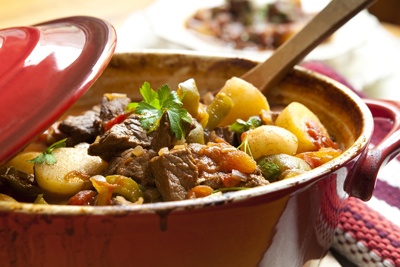Diabetes Friendly Grocery Shopping on a Budget
By: Jacqueline Gomes, RDN, MBA
Diabetes is a condition many people struggle to control daily; however, taking small steps towards a healthier lifestyle is one way to reduce the stress of managing your blood sugar. As a person with diabetes, you don’t necessarily need “special foods”. The American Diabetes association reminds us that, as with all foods, you need to work them into your individualized meal plan in appropriate portions. There is no need to purchase “specialty foods”; everything you need can be found right in our stores.
Diabetic Grocery List on a Budget:
#1: Nonstarchy Veggies: Eat at least 3-5 servings of vegetables daily – Spinach, collards, kale and tomatoes.
#2: Starchy Veggies: Keep portions small, these count towards your total carb intake – Try sweet potatoes!
#3: Fresh Fruit: Rich in vitamins and minerals. Fruits contain carbs so count them towards your meal plan. – Try citrus fruits and a variety of berries which are lower in natural sugars.
#4: Poultry & Meat: Choose white, skinless meat or lean cuts of meat that are lower in saturated fat.
#5: Fish & Seafood: Include fish twice a week – bake, poach, grill or broil.
#6: Eggs: A great protein choice, add variety to your meals by scrambling or boiling an egg!
#7: Regular & Greek Yogurt: Some nonfat or lowfat Greek yogurts have twice the protein of regular yogurts (12g & 5g protein respectively per 5.3oz serving). Look for light varieties with delicious flavors and 0% fat per serving.
#8: Milk: Choose one cup of fat-free or lowfat milk for 12grams of carbohydrate, 8 grams of protein and calcium.
#9: Dried Beans, Legumes, Peas, Lentils, Nuts & seeds: Beans are an inexpensive source of protein and rich in fiber! Try to include weekly. Keep in mind that dried beans also counts as a starch, so make them count towards your carbohydrate intake. Nuts and seeds are a rich source of healthy fats that also contain protein and fiber.
#10: Whole Grains: Check that whole grains like brown rice, buckwheat, oatmeal, quinoa, rolled oats, and whole-grain barley, corn, rye or wheat are first on the ingredient list. Try pearled barley and oats/oatmeal.
#11: Spreads & Oils: Choose vegetable oils or plant-based spread that have no partially hydrogenated vegetable oils (no trans-fat). Watch portion sizes since all fats are high in calories.
#12: Beverages: Choose zero-calorie or very low calorie drinks. Try lemon and cucumber water for a refreshing way to stay hydrated!
Sources:
The American Diabetes Association. Diabetes.org
The Dannon Company, Inc.
Find your nearest Foodtown grocery store to stock up on everything you need for the week. Be sure to download our mobile app to take advantage of ongoing savings!
Slow Cooker Beef Stew
Ingredients:
- 3 Tbsp Flour
- 1 pound lean beef such as round, visible fat trimmed and cut into 1-inch cubes
- 1 Tbsp olive oil
- 3 cups fat-free, low sodium-beef broth
- 1 cup water
- 3 large carrots, chopped
- 8 ounces mushrooms, sliced
- 1 large sweet potato, peeled and cubed
- 1 onion, diced
- 1/2 tsp dried thyme
- 1/2 tsp ground black pepper
Directions:
- Place the flour in a large resealable plastic bag. Add beef and toss to coat.
- Add oil to pan over high heat. Add beef and sauté for 6 to 8 minutes, turning frequently until evenly browned.
- Transfer beef and all remaining ingredients to a large slow cooker.
- Cover and cook in slow cooker on low for 8 hours.
Dietitian Tip: Buy a cut of beef with “round” in its name and make sure to trim off all visible fat. A slow cooker is the perfect way to transform this lean cut of meat into a tender stew!
Approximate Recipe Cost: $10.50
Choices/Exchanges: 1 Starch, 1 Nonstarchy vegetable, 3 lean proteins

